
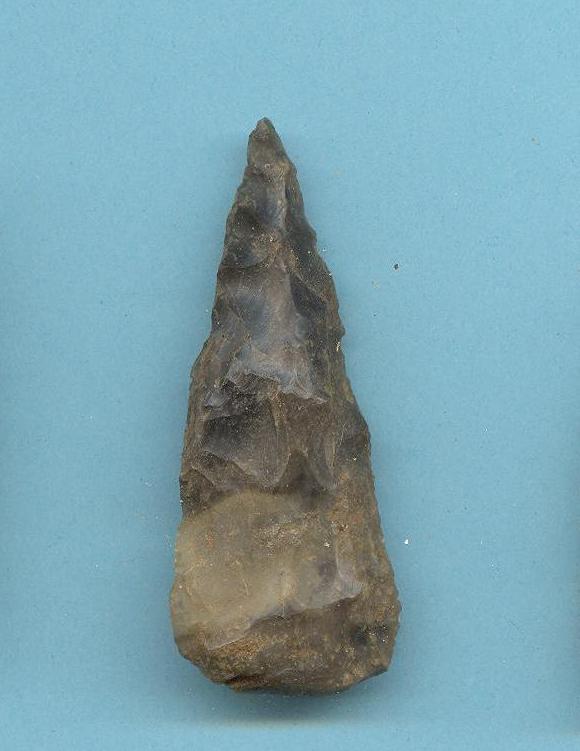


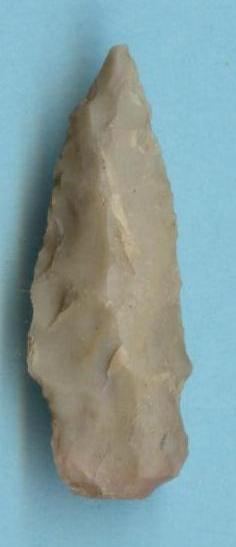
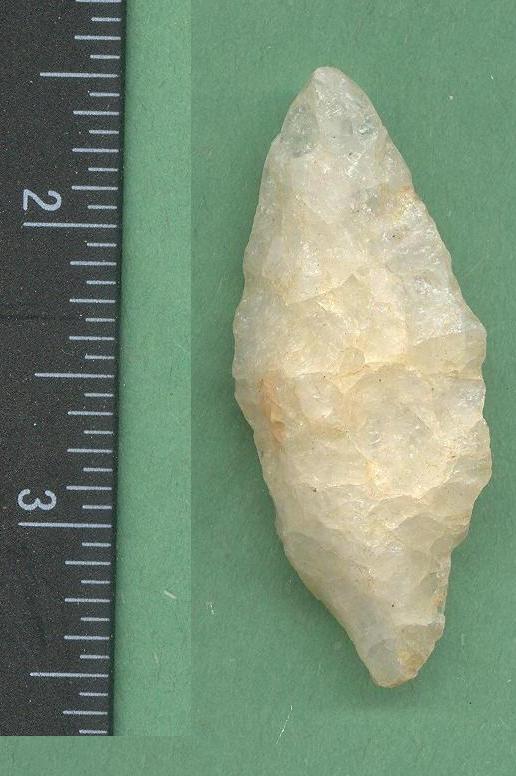


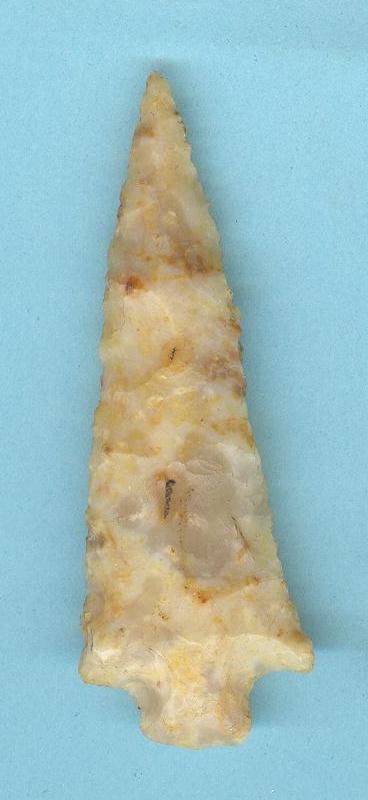
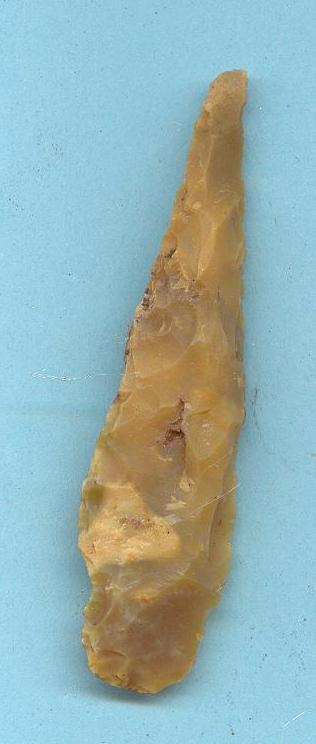
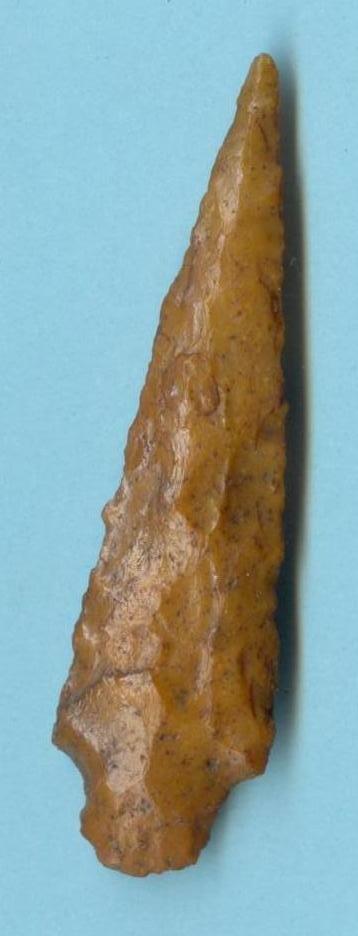
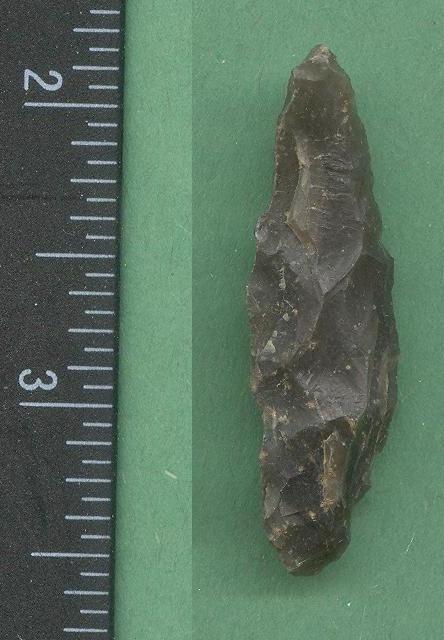

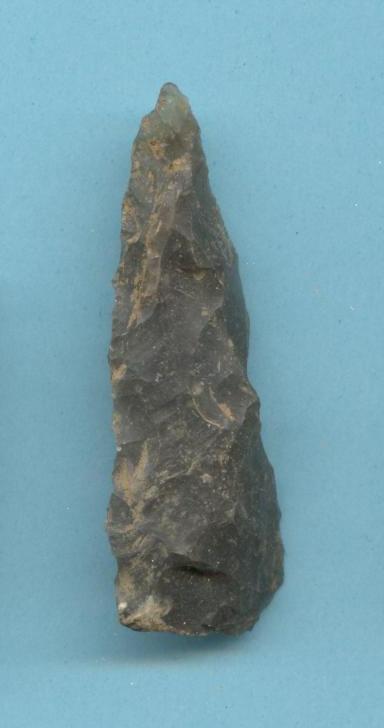
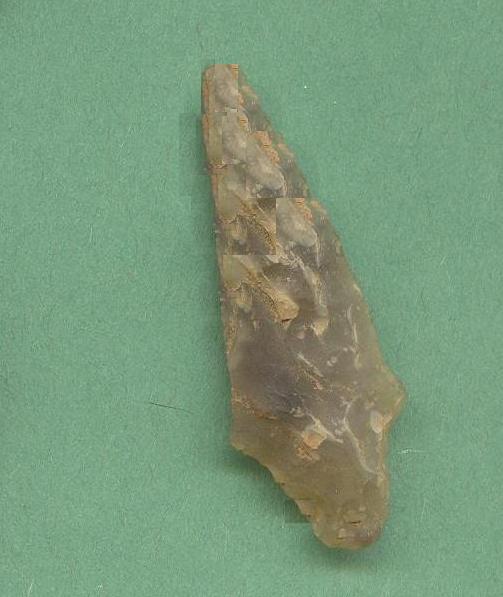

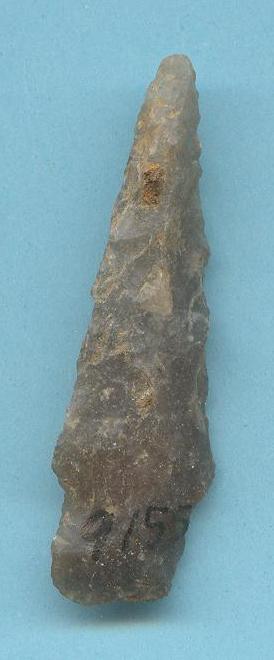
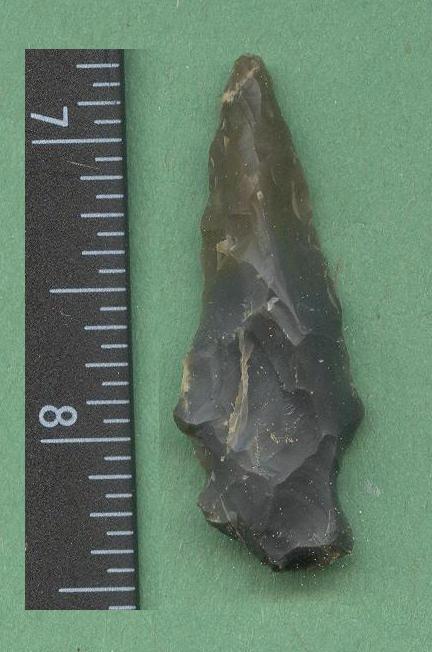

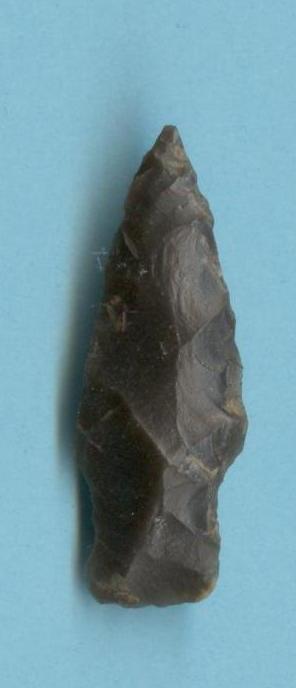


Name: Jerald Ledbetter applied the generic term Woodland Spikes to a variety of spike forms in Georgia. Individual spike form names have been given here to identify their differences.
Age: Ledbetter noted that Woodland Spike forms were present during the Early Woodland period with Dunlap Fabric Impressed ceramics dating to between 2600 and 2000 BP. Spikes were scarce in Georgia during the Middle Woodland period with only four examples at the Leake site in Bartow County. Spikes were again used in southern Georgia during the Late Woodland period between 1500 and 1200 BP.
Description: Spike forms are typically small to medium-sized points with a few large exceptions exceeding 3 inches in length. The cross section is diamond-shaped with straight blade edges. Stem configurations have been the separating factor between types as can be seen above. Benjamin types (figure 1-4) are lenticular in cross section with rounded bases, Bradley types (figure 5-8) have straight or pointed stems, Duval types (figures 9-11) have straight to bulbous stems, Flint River types (figures 12-14) are rounded, New Market types (figures 15-16) are tapering, Schild types (figures 17-20) have short straight stems sometimes with expanding basal lines, and Florida types (figures 21-22) are either pointed or expanding with a flat basal edge.